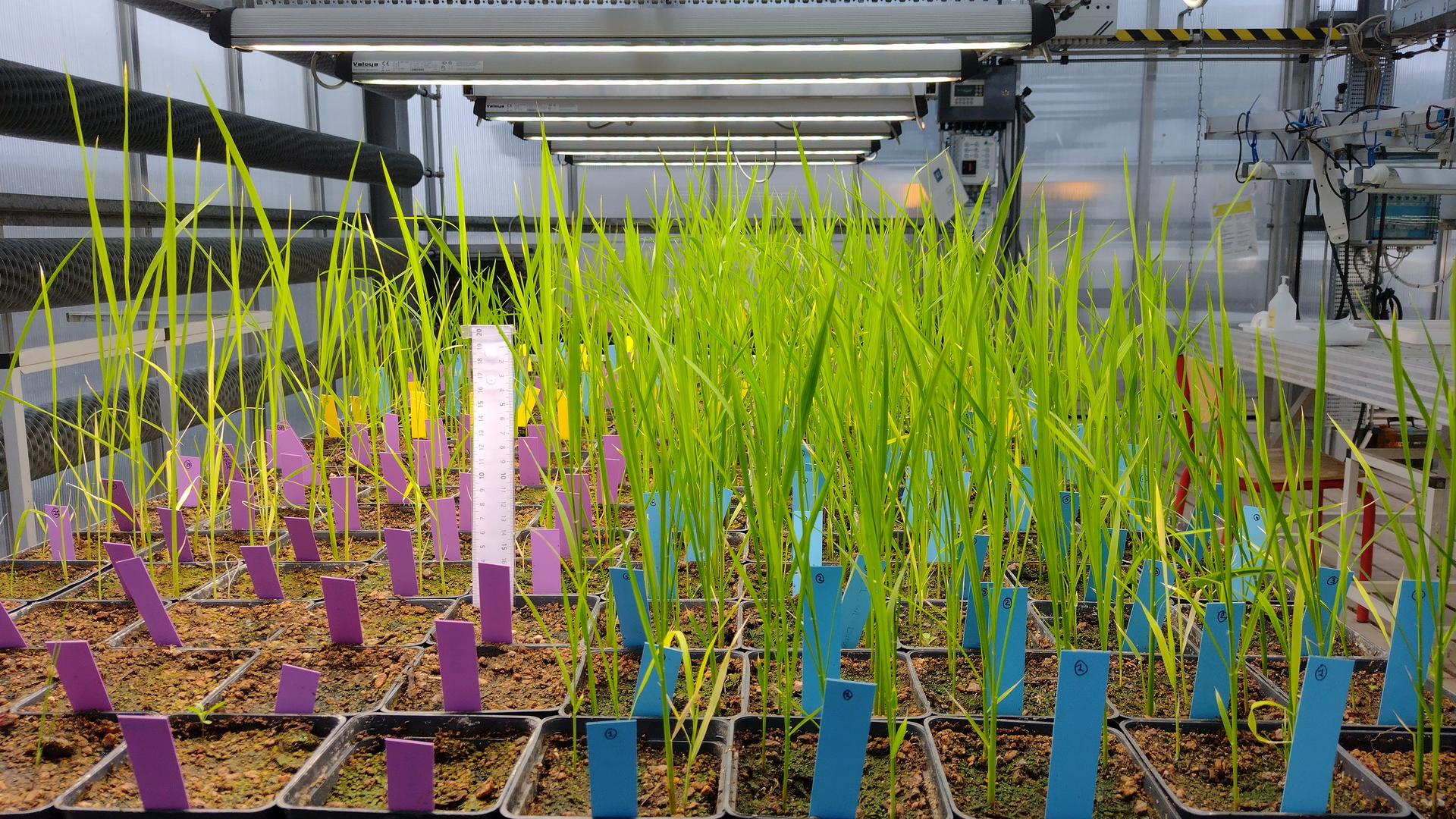Large screening of gas film thickness and retention during submergence
Hans has started up a very ambitious BSc thesis project by germinating 50 African genotypes of rice. Many of them are hybrids between Asian rice (Oryza sativa) and African rice (Oryza glaberrima) and their responses to complete submergence are not known at all.
A very important trait conferring tolerance to complete submergence is superhydrophobic leaf cuticles that retain a thin gas film under water. The gas film facilitates exchange of O2 and CO2 with the floodwater so that underwater photosynthesis and respiration are enhanced during a flood event.
Out of the 50 genotypes that Hans had sown before Christmas, a handful did not at all germinate. Nevertheless, he will be busy the next few weeks measuring leaf gas film of those that did germinate and grow. We anticipate that the next step would be to identify candidate genotypes based on initial gas film thickness and submerge these for a period of time in order to follow gas film retention in a submergence situation.
We cross our finger that this screening approach will help us identifying candidate genotypes with enhanced gas film retention so that these can be used in a breeding approach later on.

Most genotypes germinated well but there is large genotypic variation. It will be exciting to see how all this variation affect gas film retention during submergence. Photo by Hans BU Jensen.
A very important trait conferring tolerance to complete submergence is superhydrophobic leaf cuticles that retain a thin gas film under water. The gas film facilitates exchange of O2 and CO2 with the floodwater so that underwater photosynthesis and respiration are enhanced during a flood event.
Out of the 50 genotypes that Hans had sown before Christmas, a handful did not at all germinate. Nevertheless, he will be busy the next few weeks measuring leaf gas film of those that did germinate and grow. We anticipate that the next step would be to identify candidate genotypes based on initial gas film thickness and submerge these for a period of time in order to follow gas film retention in a submergence situation.
We cross our finger that this screening approach will help us identifying candidate genotypes with enhanced gas film retention so that these can be used in a breeding approach later on.

Most genotypes germinated well but there is large genotypic variation. It will be exciting to see how all this variation affect gas film retention during submergence. Photo by Hans BU Jensen.

